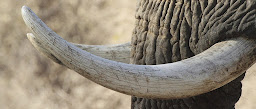Locusts Swarming India's backbone [Agricultural] worst attack in nearly 30 years.
Hello guys,
I make this blog for our brothers & sisters around the world. So that they can translate it. I hope this blog is useful to you all.
We are going to discuss the locust's swarm attack in India. The type that attacking India is Desert locust. There over 700 species of locusts and grasshoppers. Many species are not yet to be scientifically described.
Locusts are insects that belong to the family of Grasshopper. Desert locust is one of the "most devastating migratory pests" in the world. It is the oldest migratory pests.
Distance covered:
It is highly mobile and feeds on large quantities of any kind of green vegetation, including crops, pasture, and fodder. A swarm can be made up of 150 million locusts per square kilometer and can travel up 150 km/day.
For Example, It's a fact that locusts regularly cross the Red Sea which is 300 km. In speed of 16-19 km/ hour
A threat to India :
In India very small amount of locusts which is One - Square - Kilometer of locusts swarm which can eat the same amount of food is consumed by
35,000 people in one day. It threatens agricultural production and livelihoods in many countries like Africa, the middle east, and some parts of Aisa. Locusts differ from grasshoppers in their ability. In India "Eight to ten swarms, each measuring around a square kilometer as I said before, are active in parts of Rajasthan and Madhya Pradesh. It the India's worst locust swarm in nearly 30 years.
Change in behavior :
Desert Locusts have two-phase "The solitary and the gregarious ''. As their population becomes abundant and dense, they change their behavior, form swarms, and start damaging crops. Their coloring in laters changes into greenish or brownish to match the herbage, the solitary locust is green in color and the gregarious locusts are brown in color which destroys crops. This is known as ''Gregaristion'' .The change in behavior is triggered by close physical contact, following which they then become inlined to disperse together to find food, a scientist at French research center CIRAD
According to FAO [Food & Agricultural org ] :
An adult locust can eat equal to its weight which is 2 grams. So that can eat 2 grams a day, one square km of a swarm of locusts can cause a great impact on a country's agricultural economy.
Life span, Reproduction :
The life span of the locust is three[3 - 5] to five months, it depends on weather and ecological conditions. ''Reproduction'' of these insects are usually solitary and harmless. However, certain Environmental conditions like a prolonged monsoon and heavy cyclones make them reproduce faster - almost 20 folds within three months. "Egg of locust" egg are laid in sandy soils in the depth of 10 - 15 cm an egg pod consist of 95 - 158 egg three lay egg, into of [6 - 11] 1000 egg pods have been found in one square.
Prevention :
Their 5 cheapest ways prevention locust from crops and my idea is to trap the insects into a glue trap.
1] Apply of garlic spray, which Garlic is toxic to bugs and it also helps to bacteria and harmful fungus from harming the plants.
2] Dust the leaves with flour, which flour gets the mouth of locust that it becomes sticky.
3] Introduce natural predators, like frogs, warts,and so on...
4] Setup a long grass trap, in which the insects go to eat for food and get traped.
5] Raise yours owns chicken fowls.
And last is my idea of a glue trap, glue trap is illegal in many countries and even in the U.S and in India. It's illegal in the U.S to use glue traps of pest species of animals. It is illegal in India also by the act of 2011 issued by the animal welfare board of India, Declared that glue boards under Anti - cruelty law. Thus glue trap can use in the time of emergency.





Comments